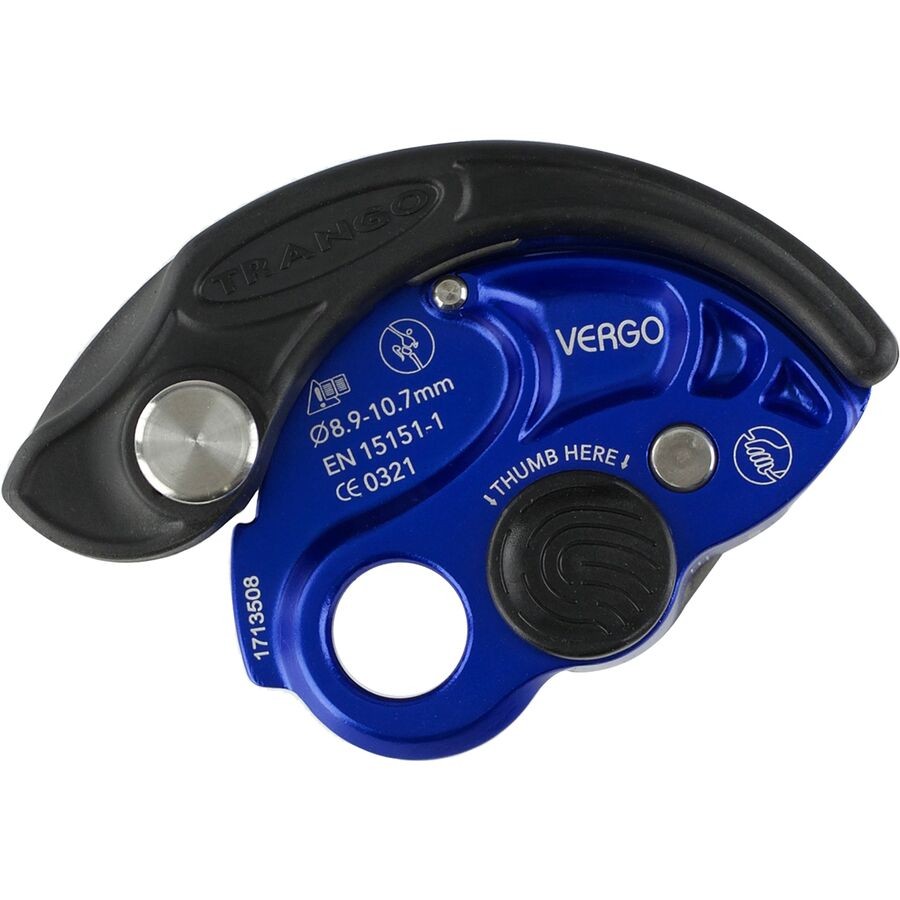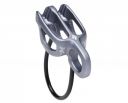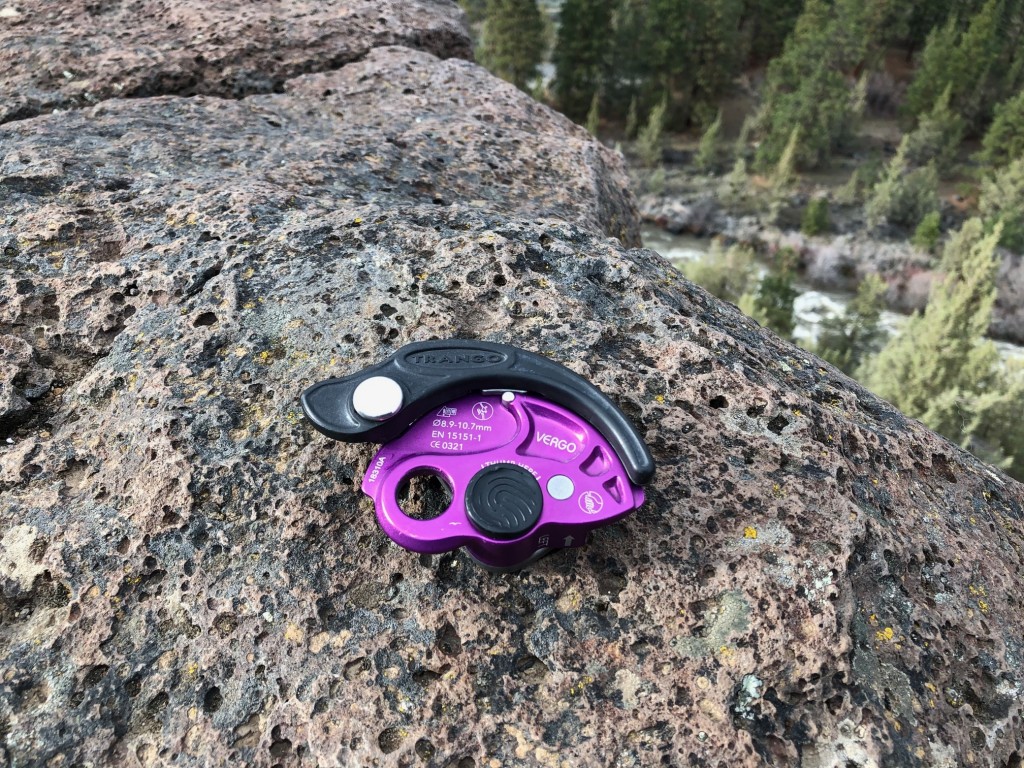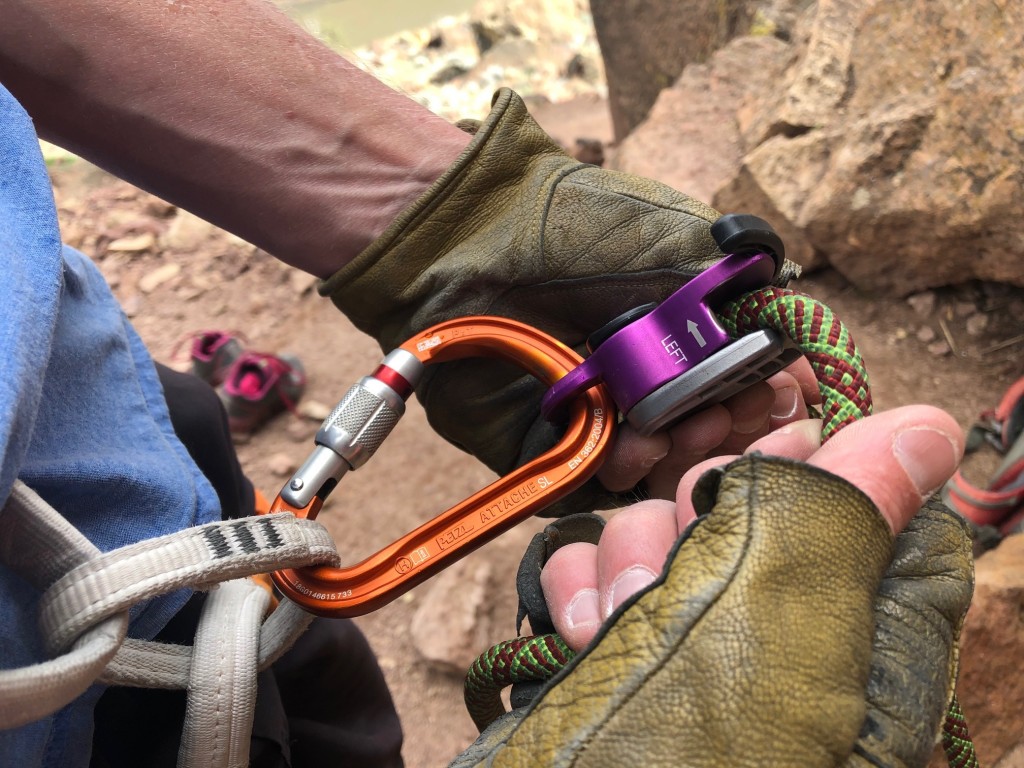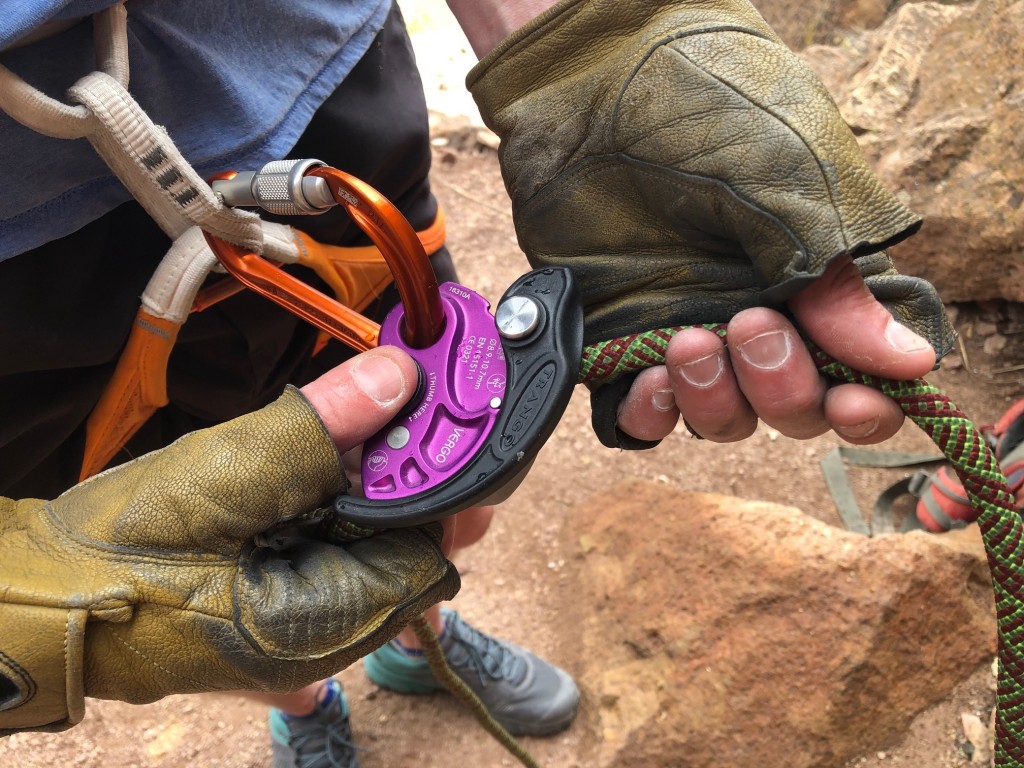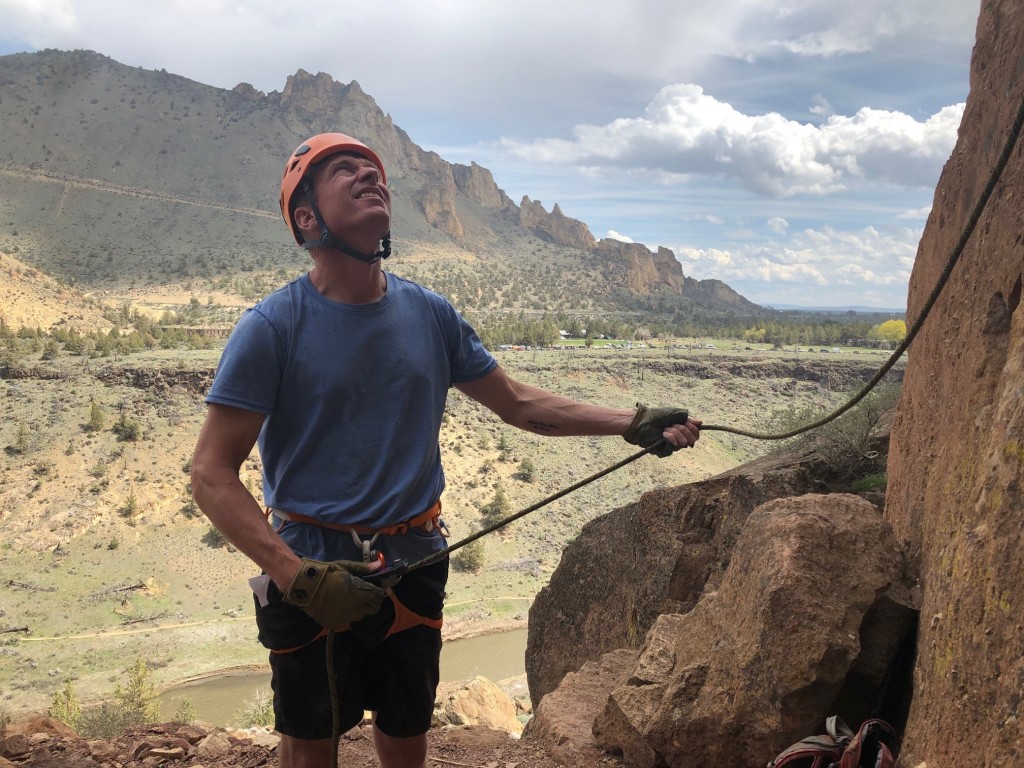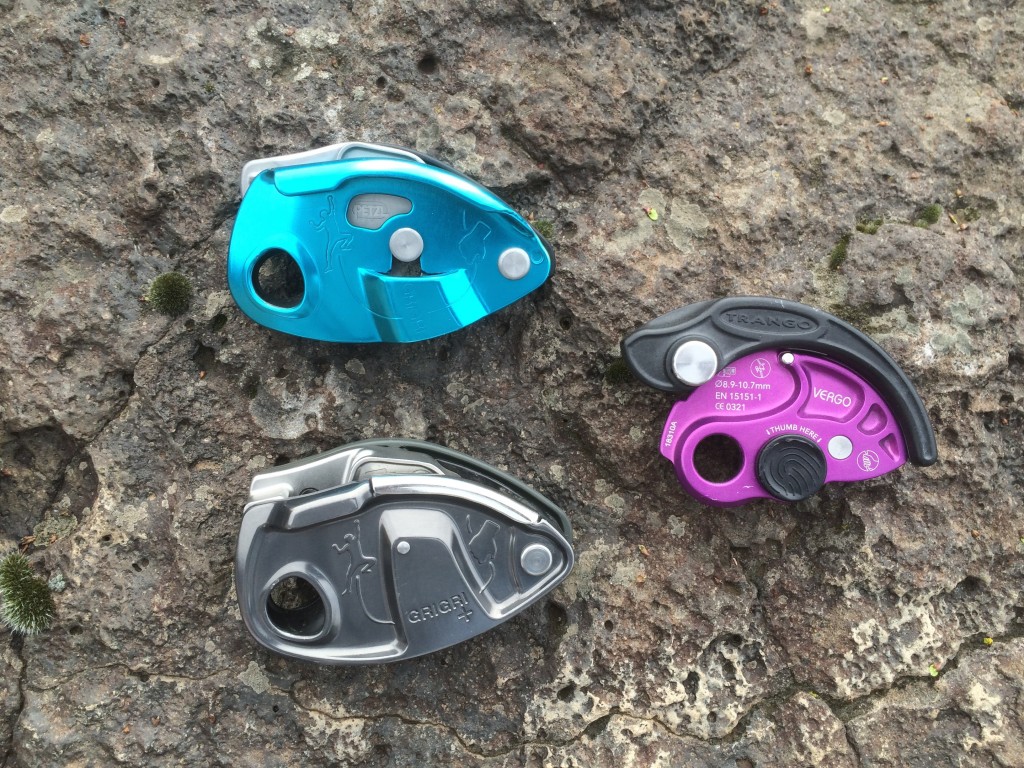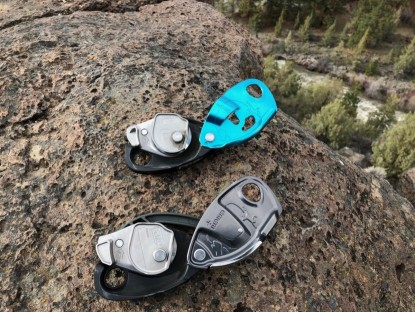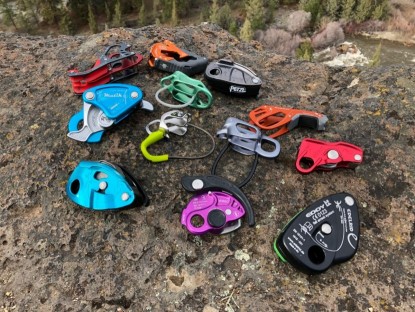Trango Vergo Review
Our Verdict
Compare to Similar Products
 This Product
Trango Vergo | |||||
|---|---|---|---|---|---|
| Awards | |||||
| Price | $100 List $99.95 at Amazon | $94.99 at Amazon Compare at 3 sellers | Check Price at Backcountry Compare at 3 sellers | Check Price at Backcountry Compare at 2 sellers | $37 List $36.95 at Amazon |
Overall Score  |
|||||
| Star Rating | |||||
| Bottom Line | The most ergonomic device for lead belaying, but it's not great for top-roping | By far the most popular belay device in the world is also one of the very best | Simple, durable, and optimal value for multi pitch climbs | Lightweight and cost effective while providing additional tools for catching falls | Same as other auto-blocking tube devices with an additional feature that helps lower a follower |
| Rating Categories | Trango Vergo | Petzl GriGri | Black Diamond ATC G... | Edelrid Mega Jul | DMM Pivot |
| Catch and Bite (30%) | |||||
| Lowering and Rappelling (30%) | |||||
| Feeding Slack (20%) | |||||
| Weight and Bulk (10%) | |||||
| Auto Block (10%) | |||||
| Specs | Trango Vergo | Petzl GriGri | Black Diamond ATC G... | Edelrid Mega Jul | DMM Pivot |
| Style | Passive assisted braking | Active assisted braking | Auto-block tube | Passive assisted braking | Auto-block tube |
| Recommended Rope Diameter (Single) | 8.9 mm - 10.7 mm | 8.5 mm - 11 mm (optimized for 8.9 mm - 10.5 mm) | 8.9 mm - 11 mm | 8.9 mm - 10.5 mm | 8.7 mm - 11 mm |
| Recommended Rope Diameter (Half) | N/A | N/A | 8.1 mm - 11 mm | Larger than 8.5 mm | 7.3 mm - 9.2 mm |
| Recommended Rope Diameter (Twin) | N/A | N/A | 8.1 mm - 11 mm | Larger than 7.9 mm | 7.3 mm - 9.2 mm |
| Weight (oz) | 7.1 oz | 6.3 oz | 2.8 oz | 2.5 oz | 2.5 oz |
| Double Rope Rappel? | No | No | Yes | Yes | Yes |
| Belay Off Anchor? | Yes | Yes | Yes | Yes | Yes |
| Assisted Braking? | Yes, passive | Yes, active | No | Yes, passive | No |
Our Analysis and Test Results
The Trango Vergo is an updated model of the old Trango Cinch, which is no longer in production, and operates the same way. It is fine-tuned, however, with a smaller design that is more compact and also features much easier to interpret markings on the outside of the device to make sure you load the device correctly, clip in to the harness in the correct direction, and hold the device in the proper manner, which is critical for properly feeding slack. One of the nicest aspects of the Vergo is that it doesn't bend the rope around an entire cam when unweighted, so there is far less friction inherent in the device when you are trying to feed out slack. With less resistance and the fact that you feed out slack to the side rather than straight up, the Vergo allows one to not only feed out larger amounts of slack quickly with fewer arm motions but do so with less effort and friction. It also eliminates the need to hold the brake-assisting cam down to pay out slack, which is a major safety flaw in other devices.
Check out this video for instructions on how the Vergo works and how to belay with it correctly. Please don't mistake our discussion for actual instruction, and be sure you learn the device properly before use. While it does take a little bit of practice to get the new style of belaying ingrained, we found that compared to a lot of active assist devices, this one was quicker and easier to learn.
Performance Comparison
Catch and Bite
Like all active assist braking devices, the Vergo works by using friction created by the rope to rotate a cam inside the device that pinches the rope, holding it firmly in place. We found this action to work extremely effectively. Unlike the Petzl GriGris, it does not have a spring inside the cam that works against the rope friction, so if anything, the Vergo is a bit grabbier and slightly quicker to lock up when pulled tight. For this same reason, it doesn't take virtually any time or give any slip when locking up, so you may want to adjust your belay style slightly (jump or slack) to allow for a more dynamic catch in certain situations.
One drawback of the Vergo compared to the new versions of the GriGris is that it can only be used with ropes down to 8.9mm, which may seem really thin, but is not as thin as the 8.5mm Beal Opera, currently the thinnest single rope on the market. Also, the device needs to be clipped to the harness in the opposite direction than most belay devices, with the brake strand closer to the belayer's chest and the climber strand further away and is then rotated sideways for use while lead belaying. This orientation ensures maximum friction due to angles of pull when a climber falls, but if you clip it to your harness the wrong way (easy for those not acquainted with the device to do), there is less friction, and skinny ropes may slip through without a firm grip on the brake hand.
Lowering and Rappelling
Lowering a climber with the Vergo, or rappelling a single strand rope, is quite easy. Simply pull a plastic lever to disengage the cam, and the rope begins to slide through the weighted device. Like most belay devices, this handle is on the left side. We found it hard to get the lowering speed just right during our first dozen or so lowers. But after some practice, it became easier to use.
Unlike many other active assist belay devices, there is no anti-panic feature on the lowering lever. This means it is easy to open the cam up too much, allowing the rope to slip through very fast if unchecked by the brake hand (keep the brake hand on the rope at all times!). Like all active assist devices, this one can only be used with one strand of rope and is therefore not as versatile for multi-pitch climbing or rappelling as a standard tube-style device.
Feeding Slack
Feeding slack with this device is easy and intuitive, and it is one of the main reasons it is our favorite device for belaying the leader. There is no special confusing technique to learn. When holding the device correctly in the right hand (watch the instructional video), with the thumb and forefinger in the correct places and the brake rope running through the palm of the hand, slack can be pulled without much friction on the left side. This is very easy to master and is the only way to use this device, as there is no option to feed rope using two hands like a standard belay device. There is also no need to use the thumb to block the cam to allow slack to pass through, the orientation of the device is all that is needed.
When a climber falls, the rope is pulled upward, locking the device. Since the direction of pull on the rope decides whether the device is locked or not, it can take a bit of effort to unlock it while still under tension. To do so, one slides the left hand down the rope to the device and pulls forcefully back while continuing to hold the device with the right hand. This takes more force than simply pressing down the cam with the thumb on a GriGri, but the technique comes quickly once you know what to do. While traditional tube-style devices are still a bit smoother and easier to manage, this one is the easiest to feed slack of all the active assist devices we have tested. And, feeding out slack quickly is possible without defeating the brake assist, creating a safer climbing experience.
Weight and Bulk
The Vergo weighs 7.1 ounces, which is roughly in line with other similar, high-performing active assist devices. While it is not the lightest device, it is one of the most compact active assist devices, a bit smaller than a GriGri.
Auto Block
While it doesn't work in the same manner as a traditional auto-block device, the Vergo can be used to belay a second climber off the anchor in the same manner as the other active assist devices. It can only accommodate one rope but has a pretty smooth action with little resistance than some auto-block devices, which saves the elbows and shoulders on a long route.
Worth noting is that while belaying the second up with the device clipped upside down directly to the anchor is okay as long as you keep the brake strand in your grip. To lower a climber, you will need to redirect the brake line upwards, in the opposite direction from the climber, to maintain the ideal friction and rope control.
Value
This device is priced similarly to the GriGri, its main competitor, but performs almost equally as well. Since we like it so much and think it is worth recommending, we think it presents solid value at the price.
Conclusion
The Trango Vergo is a great active assist braking device that uses a different method for paying out slack to a leading climber that doesn't involve having to manually block the cam, as the other devices in this review do. Because of this, we actually find it the most enjoyable device for belaying a leader. It has few downsides and is relatively easy to learn how to use, and think that those who are curious about active assisted devices but aren't sold on a GriGri should certainly check it out.


